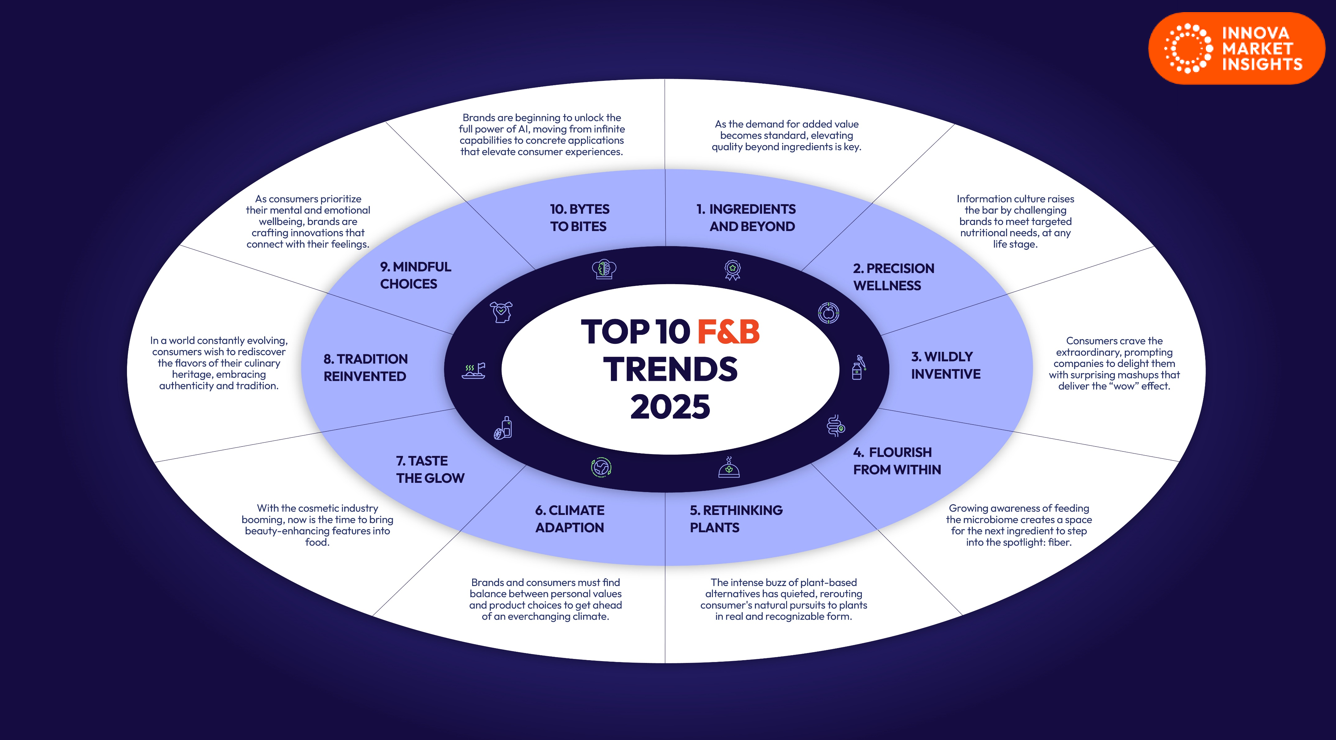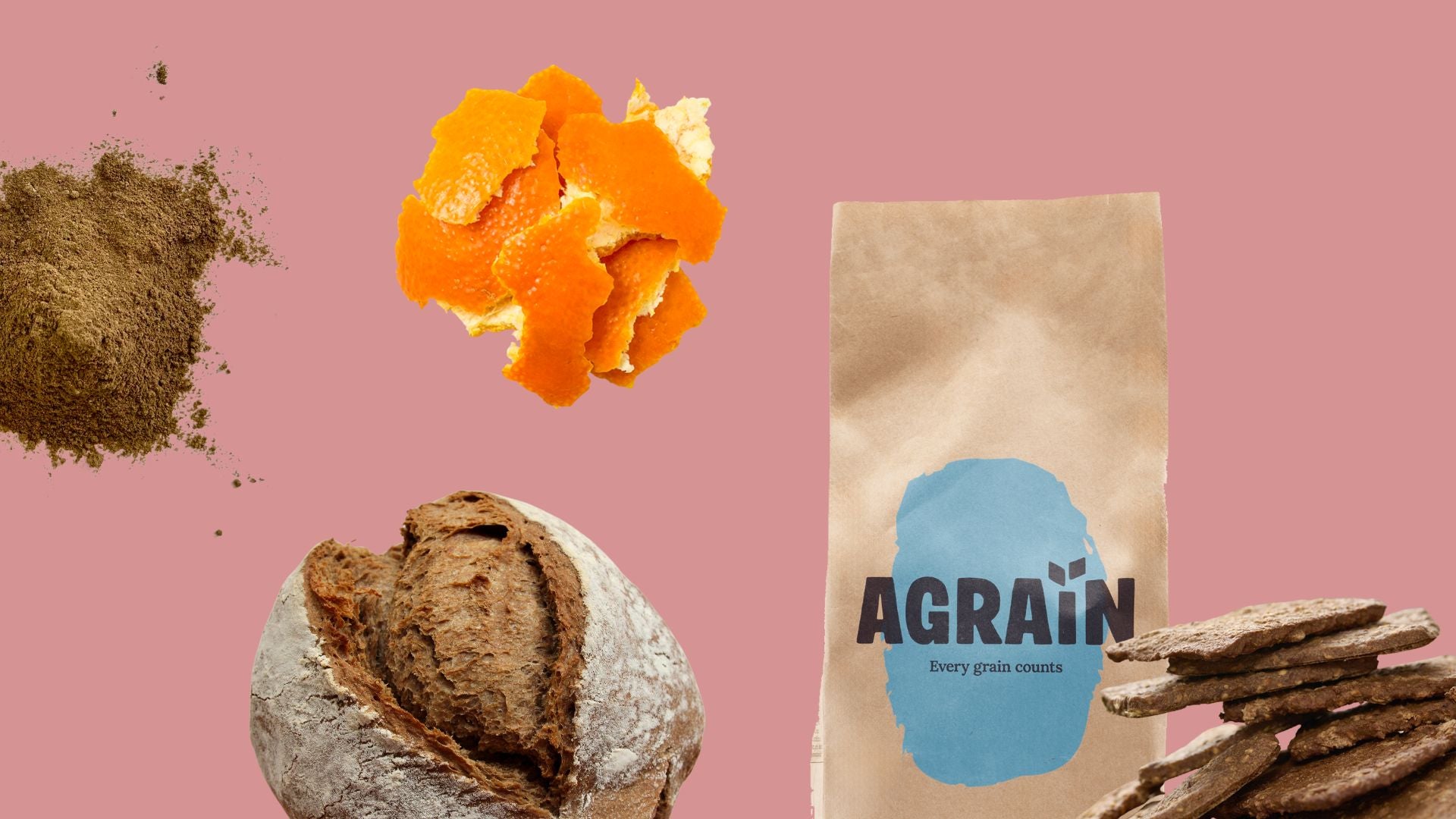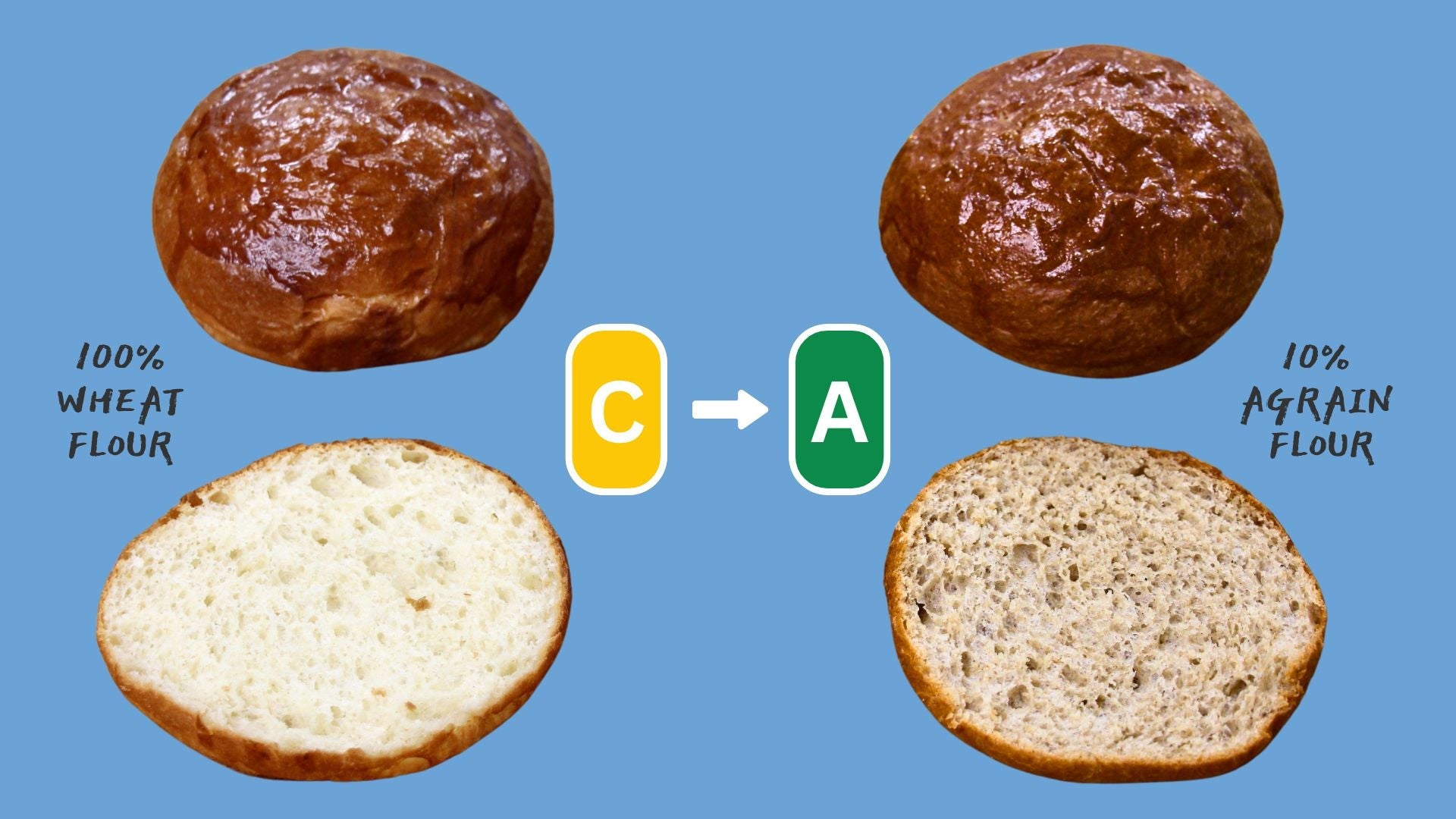Top Food Trends 2025: How Does Upcycling Fit In?
By: Ema Kosova, 19-02-2025
The food and beverage landscape is constantly being reshaped by evolving consumer values and technological innovation. One of the most exciting developments is the rise of upcycled food, made by repurposing valuable byproducts from the food industry.
Drawing on Innova Market Insights’ Top 10 Food and Beverage Trends for 2025, we’re taking a look at how upcycled ingredients fit into the future of food.
Trend #1. Ingredients and Beyond – Elevating Standards
Consumers are demanding ingredients that deliver exceptional quality, naturalness, and health benefits. Upcycled ingredients - such as spent grain flour from brewing, upcycled fruit pomace, and okara from soy processing – naturally offer superior levels of fiber, protein, and micronutrients. These ingredients can help companies differentiate themselves by elevating the nutritional profile of foods while also by bringing unique textures and flavours to the table.
Trend #2. Health – Precision Wellness
Precision wellness focuses on personalized nutrition and functional benefits. Many upcycled ingredients naturally contribute to health by providing prebiotic fibers and antioxidants. For example, upcycled fruit pulps are rich in antioxidants, while spent grain flour offers both fiber and protein. These benefits enable food manufacturers to develop products tailored to specific health needs, from balanced breakfast options to nutrient-dense snacks.
Trend #3. Flavours – Wildly Inventive
Consumers are seeking “fun an excitement” in food and beverage products, including unexpected flavours and unusual product mash ups. Upcycled foods are a playground for creative flavour development and unique combinations. Agrain’s spent grain flour adds distinctive nutty and chocolatey aroma to baked goods, while ingredients like coffee cascara add a tangy, fruity complexity to beverages. These reimagined ingredients represent an opportunity for chefs and manufacturers to experiment with novel and exciting flavour pairings.
Trend #4. Gut Health – Flourish from Within
With gut health at the forefront of consumer priorities, ingredients that support a healthy microbiome are in high demand. Upcycled ingredients often boast naturally high fiber content and prebiotic properties. For instance, the fiber in upcycled fruit pulp, corn husks (e.g., The Supplant Company), or spent grain supports gut health, making ingredients made from these by-products ideal for products aimed at digestive wellness.
Trend #5. Plant-based – Rethinking Plants
The plant-based trend continues to evolve, with consumers seeking meat alternatives that are minimally processed and natural while maintaining great taste and texture. Upcycled ingredients derived from plant by-products show great promise for meeting these demands by offering a clean-label source of nutrients including plant-based protein (e.g. from spent grain or okara).
Trend #6. Sustainability – Adapting to Change
Sustainability continues to be a top food trend, with widespread awareness of the environmental impact of food production amongst both consumers and manufacturers. By transforming food loss and waste into valuable ingredients, upcycling reduces emissions caused by food waste while presenting a new way to produce food with significantly lower environmental impact. The benefits trickle down to food producers who integrate upcycled ingredients into their products. For example, Agrain's LCA shows that for every kilogram of traditional flour replaced with upcycled spent grain flour, 2 squared meters of land use is saved!
Trend #7. Beauty Food – Taste the Glow
Modern consumers increasingly recognize that nutrition impacts both health and appearance. Upcycled ingredients can be nutrient powerhouses that support skin and hair health. Ingredients such as antioxidant-rich fruit pomace or vitamin-packed vegetable by-products can be incorporated into “beauty foods” designed to promote radiant skin and vitality from within. Besides this, food by-products such as coffee grounds are being transformed into natural, active ingredients in personal care products (e.g., Kaffe Bueno)
Trend #8. Food Culture – Tradition Reinvented
Reinventing tradition means honouring culinary heritage while embracing innovation. Upcycled ingredients allow manufacturers to transform classic recipes by incorporating sustainably sourced, reimagined elements. Whether it’s a pizza dough enriched with spent grain flour or a pain-au-chocolat made with an upcycled chocolate alternative (e.g., THIC by endless food co), these ingredients merge tradition with modern demands for healthier and sustainable foods.
Trend #9. Mood Food – Mindful Choices
As mental and emotional wellness become central to food choices, consumers are turning to products that offer both comfort and nutritional balance. Upcycled foods – by virtue of their high fiber, protein, and micronutrient content – can help create balanced, “mood-boosting” foods. These ingredients support mindful consumption and can be key components in functional formulations designed to enhance mental wellbeing and reduce stress.
Trend #10. AI – Bytes to Bites
The integration of AI is transforming how food products are developed, from ingredient sourcing to flavour optimization. Advanced technologies are now being used to refine upcycled food products, ensuring consistent quality. For example, at Agrain by Circular Food Technology we use a special algorithm to blend difference types of spent grain into consistent colour and aroma profiles every time. The AI and tech trend not only streamlines the development of upcycled ingredients but can also help companies better understand consumer preferences, match byproducts to applications, and ensure that these sustainable solutions meet market demand.

Top 10 Food & Beverage Trends 2025. Source: Innova Market Insights.
Join the Movement!
Upcycled foods are proving to be more than just a solution to food waste – they’re a dynamic force driving innovation across every facet of the food and beverage industry. From premium ingredients that elevate quality to sustainable practices that conserve our planet’s resources, upcycled ingredients are at the forefront of the 2025 food trends. Embracing them meets the evolving needs of consumers and sets the stage for a more sustainable, flavourful future.
Discover the potential of upcycled foods and stay ahead with the future of food. Contact us to learn more.


